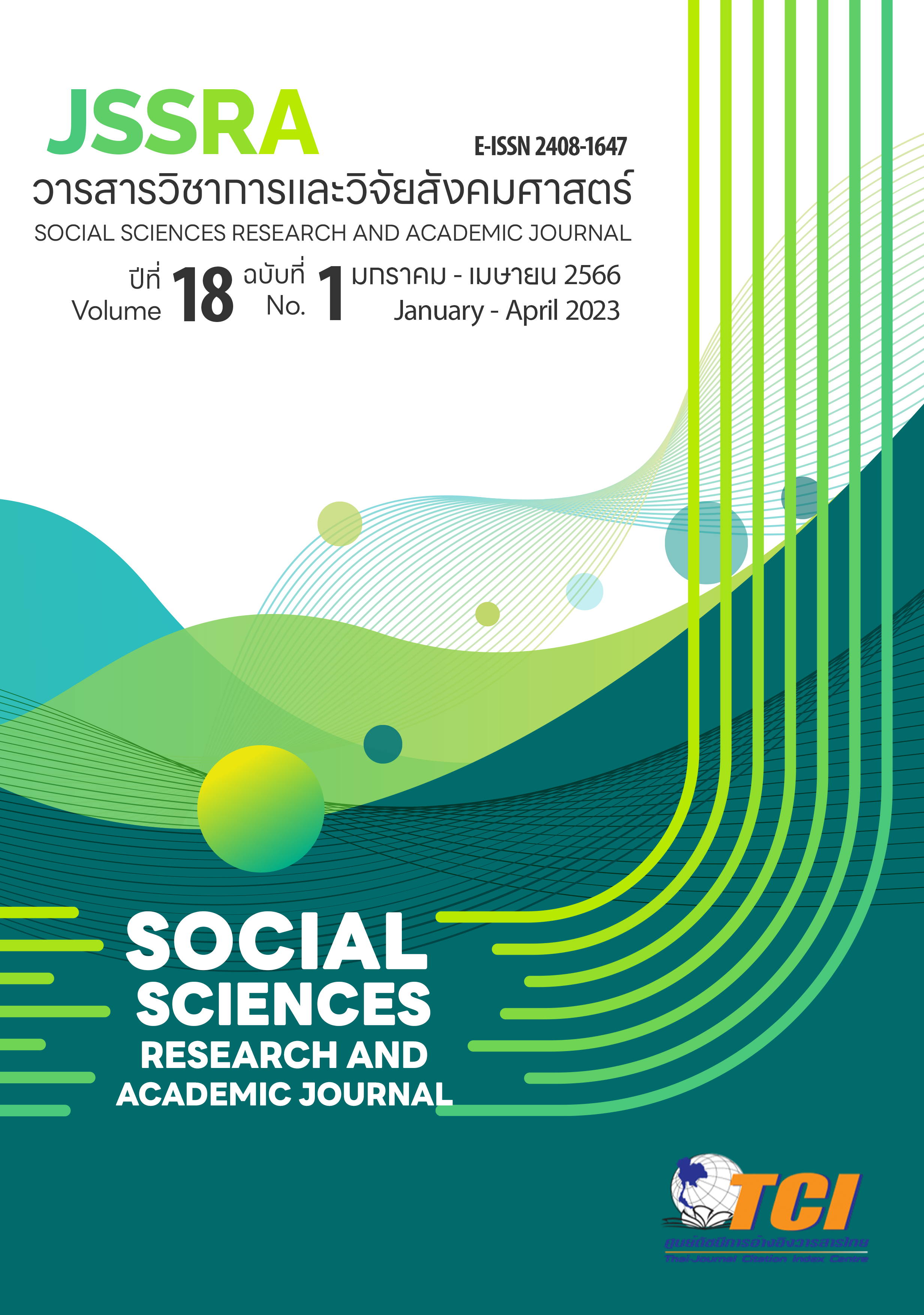การสร้างภาพลักษณ์แหล่งท่องเที่ยวแสวงบุญ ด้วยแนวคิดสำนึกแห่งถิ่นที่ Image Creation for Pilgrimage Attractions with the Sense of Place concept
Main Article Content
บทคัดย่อ
การศึกษานี้มีวัตถุประสงค์ 1) เพื่อศึกษาลักษณะของสำนึกแห่งถิ่นที่ของแหล่งท่องเที่ยวแสวงบุญจากมุมมองของนักท่องเที่ยวแสวงบุญ 2) เพื่อเสนอแนวทางการสร้างภาพลักษณ์สำหรับแหล่งท่องเที่ยวแสวงบุญ โดยการสัมภาษณ์นักท่องเที่ยวแสวงบุญชาวไทยที่เคยมีประสบการณ์ในแหล่งท่องเที่ยวที่เป็นศาสนสถานและศรัทธาสถานในประเทศไทยจำนวน 52 ราย โดยเทคนิคการเก็บข้อมูลด้วยการแนะนำต่อแบบลูกบอลหิมะ (Snowball Sampling) และใช้วิธีการวิเคราะห์แก่นสาระ (Thematic Analysis) ในการวิเคราะห์ข้อมูล
ผลการศึกษาพบว่า 1) สำนึกแห่งถิ่นที่มี 2 ลักษณะได้แก่ สำนึกแห่งการเยียวยา ที่ช่วยให้นักท่องเที่ยวรู้สึกได้รับการเยียวยาจิตใจ และสำนึกแห่งความเดิมแท้ทางวัฒนธรรมและคำสอนทางศาสนา 2) นำเสนอแนวทางการสร้างภาพลักษณ์แก่หน่วยงานด้านการตลาดการท่องเที่ยว และผู้เกี่ยวข้อง เพื่อใช้ในการสื่อสารการตลาดของแหล่งท่องเที่ยวใน 5 ลักษณะ ได้แก่ ภาพลักษณ์ด้านความสงบ, ภาพลักษณ์ด้านความศักดิ์สิทธิ์, ภาพลักษณ์ด้านอัตลักษณ์พิเศษ, ภาพลักษณ์ด้านมรดกทางวัฒนธรรม และภาพลักษณ์ด้านการส่งเสริมสุขภาวะทางจิตวิญญาณและการพัฒนาตนเอง
The objectives of this study were 1) to examine the characteristics of sense of place from the perspectives of tourists. 2) to propose guidelines for image creation for pilgrimage attractions. A qualitative study used the snowball sampling technique and thematic analysis to categorize thoughts and attitudes from in-depth interviews with 52 tourists who had visited religious and spiritual sites in Thailand.
The results showed that 1) there are two primary characteristics of the sense of place: the sense of therapeutics that helps tourists feel healed. And the sense of theoplacity in the way that tourists perceived the site’s authenticity as the compilation of cultures and teachings. 2) The guidelines for Destination Marketing Organization (DMO) and stakeholders to develop a destination image or marketing communication may be developed in accordance with any of the five themes; the image of calmness, the image of holiness, the image of uniqueness, the image of cultural heritage, and the image of spiritual wellness-promoting and transformation.
Article Details
เอกสารอ้างอิง
ยุทธศักดิ์ ฉัตรแก้วนภานนท์, และพรธีรา ภาวดี. (2562) วัดและการกลายเป็นแหล่งท่องเที่ยว. งานประชุมวิชาการระดับชาติด้านการท่องเที่ยวกับมนุษย์ศาสตร์. (น. 1000-1014). เชียงใหม่: ภาควิชาการท่องเที่ยว คณะมนุษย์ศาสตร์ มหาวิทยาลัยเชียงใหม่.
Abou‐Shouk, M. A., Zoair, N., El‐Barbary, M. N., & Hewedi, M. M. (2018). Sense of place relationship with tourist satisfaction and intentional revisit: Evidence from Egypt. International Journal of Tourism Research, 20(2), 172-181.
Belhassen, Y., Caton, K., & Stewart, W. P. (2008). The search for authenticity in the pilgrim experience. Annals of tourism research, 35(3), 668-689.
Clarke, V., Braun, V., & Hayfield, N. (2015). Thematic analysis. Qualitative psychology: A practical guide to research methods, 222, 248.
Collins-Kreiner. (2010). Researching pilgrimage: Continuity and transformations. Annals of Tourism Research, 37(2), 440-456.
De Graca, M., & Mouga, P. (2003). Religious tourism: contributions towards a clarification of concepts. Fernandes, C. McGettigan, F. And Edwards, J.(eds), Religious Tourism and Pilgrimage–Atlas: Special Interest Group, 27-42.
Hung, K., Yang, X., Wassler, P., Wang, D., Lin, P., & Liu, Z. (2017). Contesting the commercialization and sanctity of religious tourism in the Shaolin monastery, China. International Journal of Tourism Research, 19(2), 145-159.
Jorgensen, B. S., & Stedman, R. C. (2001). Sense of place as an attitude: Lakeshore owners attitudes toward their properties. Journal of environmental psychology, 21(3), 233-248.
McClinchey, K. A., & Carmichael, B. A. (2010). The role and meaning of place in cultural festival visitor experiences. In The tourism and leisure experience. Consumer and managerial perspectives (pp. 59-80). Bristol: Channel View Publications.
Tsai. (2016). Memorable tourist experiences and place attachment when consuming local food. International Journal of Tourism Research, 18(6), 536-548.
UNWTO, (2011). Religious Tourism in Asia and the Pacific. Madrid, World Tourism Organization (UNWTO).
Zaušková, A., Grib, L., Hliboký, M., & Kyselica, P. (2016). Innovative use of marketing communication tools in promoting pilgrimage sites. European Journal of Science and Theology, 12(1), 223-230.


